Cultural Resources
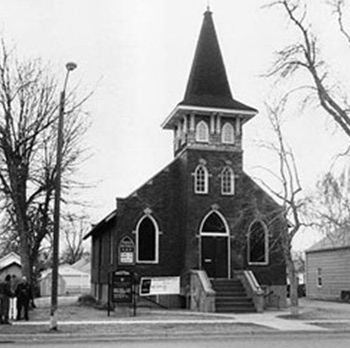
Union Bethel AME Church, Great Falls, Montana, 1890-Present
*HOMECOMING/FAMILY AND FRIENDS DAY
CULTURAL RESOURCES
Sunday, October 30, 2011
Anthony B. Pinn, Lectionary Team Cultural Resources Commentator
I. Historical Considerations
The history of people of African descent in the United States is one laced with movement, disconnection, and the pain of loss. Taken away from family, friends, and the larger networks and safeguards of community, enslaved Africans were brought to the “New World.” Into a strange land—with unfamiliar customs, language, and life arrangements—enslaved Africans made their way seeking to establish life meaning and importance over against efforts to render them less than fully human. Although the family units and ways of living together were disrupted by the “Middle Passage,” enslaved Africans and their descendants were creative and forged a new sense of community and new relationships that took into consideration memories and stories as well as other available resources for fostering togetherness.
Despite prohibitions meant to maintain a sense of enslaved Africans as simply sources of labor and economic profit—prohibitions such as restrictions on marriages and the constant threat of being sold away from those for whom one cared—enslaved Africans developed a strong sense of connection, of community, of family. The system of slavery did not require slaveholders to respect the efforts of enslaved Africans to develop and preserve families and friendships, yet strong connections were forged and maintained. Yes, slavery and ongoing discrimination are harsh and do damage to the stability of relationships, but oppression has not been strong enough to destroy the creative ways in which African Americans have forged connections to their sense of self and to others. Over the course of centuries, African Americans have forged and nurtured relationships and carved out spaces they called “home.”
Mid-twentieth century, socio-political reports, such as the infamous “Moynihan Report” or “The Negro Family: The Case for National Action,” presented in 1965 sought to work through the socio-economic problems encountered by African Americans during the twentieth century. And it associated many of these problems with what its authors assumed was the flawed nature of African American familial connections. While the report rightly noted the economic struggles of African Americans and the implications of poverty on life within African American communities, it wrongly argued that black family structure is pathological and destructive. Underlying this was the assumption that black family structures were defective to the extent that they did not correspond to what white Americans deemed to be the ideal arrangements. Reviews of the report were mixed, with some arguing it was racist and others praising its findings. However, many African Americans fought what they considered its distorted and racially charged depiction of black familial life. Many argued that the report did not account for the effects of racism practiced over the course of centuries, and the report did not take into consideration the underlying causes of the dilemmas then faced by African Americans. Others argued that the report made use of a troubling depiction of African American women. Some African American sociologists also argued that the report was blind to the creative and healthy family structures and friendships within African American communities, whereby structures such as extended families helped African Americans maintain important and healthy relationships and support networks. And, of course, while having their problems (e.g., sexism and homophobia), black churches when they have been at their best played a role in nurturing community and productive relationships within African American communities.
The struggle of African Americans for stable and supportive connections and relationships involves recognition that we live best in community. It is in our interactions with others that we are most mindful of our obligations to live productively and in ways that promote the welfare of more than ourselves. In relationships—family and friendships—we are most aware of our deep moral and ethical obligations beyond our personal wants and desires. In relationships we are our most human selves. This is why so many African American churches still hold Homecoming/Family and Friends Day celebrations.
II. The Impact of the Mini-Series “Roots”
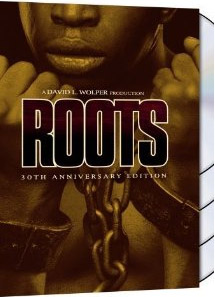 |
It was difficult to have a television or to be involved in conversations during the late 1970s and not have Alex Haley’s “Roots” come up. The book and mini-series influenced popular culture through positive and creative attention to African American life by pointing out the full range of what it meant to live in the United States as the descendants of slaves. This fostered at times uncomfortable conversations concerning the nature of white supremacy and racism in the United States and the very real ways in which both continued to operate. What is more, the mini-series gave graphic attention to the persistence of African American relationships—friendships and families—despite the hardships of slavery as well as the trauma of “Jim and Jane Crow” discrimination. Alex Haley’s story of historical memory, of the strands of his family, sparked similar efforts by countless African Americans to explore family trees and to better link with the various segments of their communities in intentional ways. So many sought to uncover the threads of their family stories from Africa to the Americas. And with technological advances, African Americans (and others) gained access to web-based tools for developing family genealogies. The age-old question “Who are your people?” took on new meaning.
III. Songs That Speak to the Moment
The occasion of Homecoming/Family and Friends Day would not be complete in a black church if the familiar “We’ve Come This Far by Faith” by Albert A. Goodson was not sung. This song is a reminder during any Homecoming service that a church has had difficult moments, deaths of precious loved ones, deaths of pastors, perhaps relocation, and so much more. On this occasion the church reminisces as the entire congregation lifts this song of the Church.
We’ve Come This Far by Faith
Refrain
We’ve come this far by faith, leaning on the Lord;
Trusting in His Holy Word, He’s never failed me yet.
Oh, oh - -, oh - - can’t turn around - -
We’ve come this far by faith.
1. Don’t be discouraged, when trouble’s in your life.
He’ll bear your burdens, and move all misery and strife.
That’s why we’ve…
Refrain
2. Just the other day I heard a man say
He didn’t believe in God’s word.
But I can truly say that God has made a way.
And He’s never failed me yet.
That’s why we’ve…
Refrain
Turn-Around
We’ve come this far by faith.
We’ve come this far by faith. (END)1
Another favorite, “Hold to God’s Unchanging Hand” by Jennie Wilson tells all hearers, especially those who have strayed away from the Church, that God is the one in whom we can place our trust without fear that God will leave us or forsake us.
Hold to God’s Unchanging Hand
1. Time is filled with swift transition,
Naught of earth unmoved can stand,
Build your hopes on things eternal,
Hold to God’s unchanging hand.
Refrain:
Hold to God’s unchanging hand,
Hold to God’s unchanging hand;
Build your hopes on things eternal,
Hold to God’s unchanging hand.
2. Trust in Him who will not leave you,
Whatsoever years may bring,
If by earthly friends forsaken
Still more closely to Him cling.
3. Covet not this world’s vain riches
That so rapidly decay,
Seek to gain the heav’nly treasures,
They will never pass away.
4. When your journey is completed,
If to God you have been true,
Fair and bright the home in glory
Your enraptured soul will view.2
“O God, Our Help in Ages Past,” written by Isaac Watts, is a reminder that God has been with the church and that because the Church is in the safe hands of God, come what may, the Church will survive and so will those who comprise God’s church.
O God, Our Help in Ages Past
1. O God, our help in ages past,
Our hope for years to come,
Our shelter from the stormy blast,
And our eternal home.
2. Under the shadow of Thy throne
Thy saints have dwelt secure;
Sufficient is Thine arm alone,
And our defense is sure.
3. Before the hills in order stood,
Or earth received her frame,
From everlasting Thou art God,
To endless years the same.
4. Thy Word commands our flesh to dust,
“Return, ye sons of men”:
All nations rose from earth at first,
And turn to earth again.
5. A thousand ages in Thy sight
Are like an evening gone;
Short as the watch that ends the night
Before the rising sun.
6. The busy tribes of flesh and blood,
With all their lives and cares,
Are carried downwards by the flood,
And lost in foll’wing years.
7. Time, like an ever-rolling stream,
Bears all its sons away;
They fly, forgotten, as a dream
Dies at the op’ning day.
8. Like flow’ry fields the nations stand
Pleased with the morning light;
The flow’rs beneath the mower’s hand
Lie with’ring ere ’tis night.
9. O God, our help in ages past,
Our hope for years to come,
Be Thou our guard while troubles last,
And our eternal home.3
IV. Making It a Memorable Learning Moment
The biographical story offered by Alex Haley and the underlying question “Who are your people, and how do you represent them?” should always be kept in mind. And this Sunday—Homecoming/Family and Friends Day—offers a vital opportunity to recall the importance of family and friendships. But more than that, this Sunday also gives us another opportunity to renew our efforts to better connect with family and friends, to maintain and nurture our connection to community. Through active participation in the deep meaning of Homecoming/Family and Friends Day, it is possible to make certain the church is always oriented toward the nurturing of relationships. If nowhere else, those committed to the best practices of the Christian faith should push to make certain that their churches are places of healthy relationships, of deep and meaningful connections that allow for an assertion that no one walks through the world alone.
Planning the Service
The following suggestions for planning a service to make it more memorable were provided by Pastor Christopher M. Jones, who prepared the 2011 Homecoming/Family and Friends Day Lectionary commentary.
- Identify persons who can serve on a committee to administrate the planning of your “Homecoming” service. Be sure to include all age groups and disabled persons.
- Make sure that the date you select for the event is accessible to the greatest number of people affiliated with the church.
- Consider making an e-vite with a personal video from the pastor of the host church to be sent to all known participants and/or church members from years past.
- Consider developing a “Save the date” flyer/postcard/brochure to be mailed to all participants four to five months in advance of the actual event.
- Consider a three-part teaching series on the family and/or God’s idea for a “Homecoming.” This should be done up to four weeks prior to the actual event.
- Notify all local media of your intention to host the event and the date, time, and location. It is always good to ask for assistance in developing a press release template if you have not previously prepared a press release.
- Create a litany that includes representation from multiple generations.
- Revise your church bulletins to reflect the momentous occasion for the day of the celebration.
- Plan softball, volleyball, basketball, cooking contests, children’s games, storytelling, swimming, a booth where persons can get free health screenings, etc.
- Consider developing T-Shirts to market the event and your church’s participation in it.
- Plan a photo shoot at the gathering for the church archives.
- Consider acknowledging all of the families participating in the worship event.
- Acknowledge all the previous pastors who served the church.
- Consider developing a follow-up letter and/or survey to measure the success of the event.
- Do a personal video of thanks to all who attended; this would be both cutting-edge and appropriate.
Books
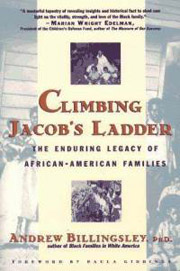 |
Billingsley, Andrew. Climbing Jacob’s Ladder: The Enduring Legacy of African American Families. New York, NY: Touchstone, 1994. |
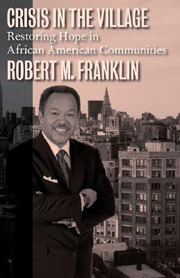 |
Franklin, Robert M. Crisis in the Village: Restoring Hope in African American Communities. Minneapolis, MN: Fortress, 2007. |
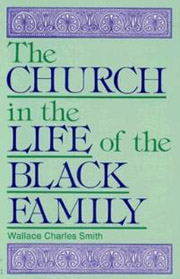 |
Smith, Wallace Charles. The Church in the Life of the Black Family. Valley Forge, PA: Judson Press, 1986. |
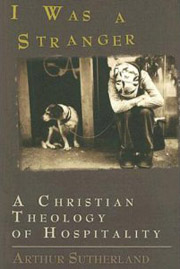 | Sutherland, Arthur. I Was a Stranger: A Christian Theology of Hospitality. Nashville, TN: Abingdon Press, 2006. |
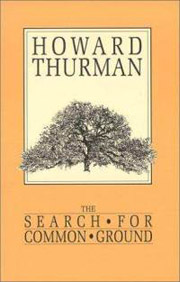 | Thurman, Howard. The Search for Common Ground. Richmond, IN: Friends United Press, 1986. |
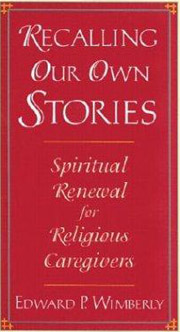 | Wimberly, Edward P. Recalling Our Own Stories: Spiritual Renewal for Religious Caregivers. New York, NY: Jossey-Bass, 1997. |
- “African American Lives” (PBS, 2006)
- “African American Lives 2” (PBS, 2008)
- “Black Is…Black Ain’t” DOCURAMA (2009)
- “Faces of America” (PBS, 2010)
- “Frontline: Two Nations of Black America” (PBS, 2008)
- “The Black List: Intimate Portraits of Black America, Volume One” (INDICAN PICTURES, 2009)
- “The Black List, Volume Two” (INDICAN PICTURES, 2010)
- “The Souls of Black Girls” (Femme Noir Productions, 2008)
- “What Black Men Think” (!YAGO Entertainment Group, 2008)
*The song that accompanies today’s image is titled “The Old Landmark,” which was written by William Herbert Brewser. Here is it sung by Clara Ward and the Clara Ward Singers.
Notes
1. Goodson, Albert A. We’ve Come This Far by Faith. African American Heritage Hymnal. Chicago, IL: GIA Publications, 2001. #412
2. Wilson, Jennie. Hold to God’s Unchanging Hand. African American Heritage Hymnal. #404
3. Watts, Isaac. O God, Our Help in Ages Past. African American Heritage Hymnal. #170



